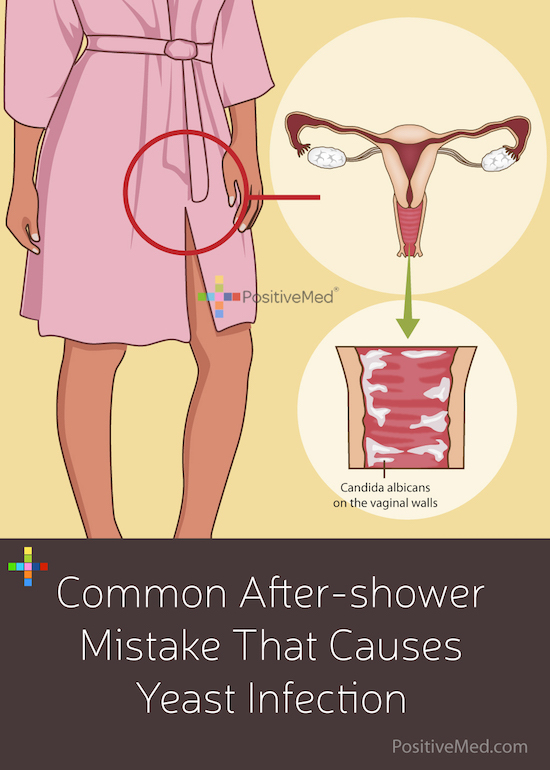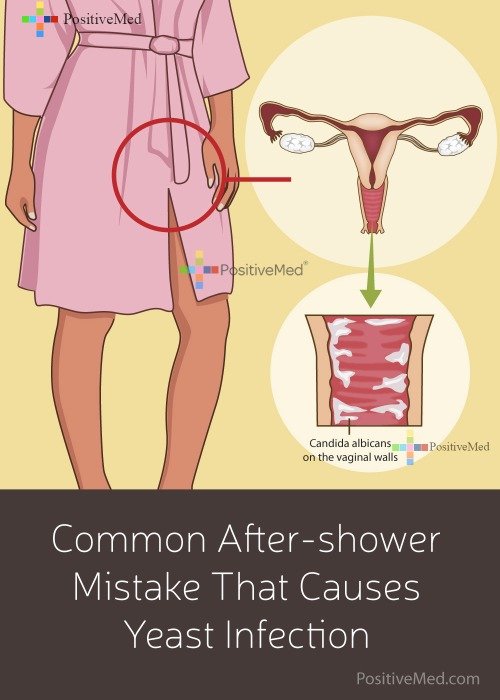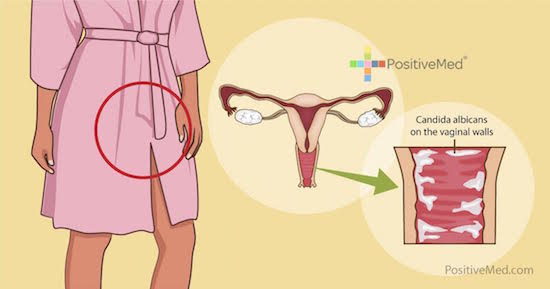You’re done with your shower. You step out, wipe off the water, reach for your clothes, and – wait! You’re about to make a mistake that might leave you with a nasty, itchy vaginal yeast infection. The key to avoiding this mistake is knowing what factors cause a yeast infection.
We all have bacteria and yeast organisms living on our skin and in your vagina. While it may be gross to think about, they’re normally just harmless passengers that don’t cause disease. One common type of yeast, called Candida albicans, grows in parts of the body where it can find more moisture, such as the mouth and vagina. When overcome by other healthy organisms, it doesn’t generally cause disease. it’s only when it overgrows that it causes things like Candida vaginitis.

Normally, a kind of bacteria called Lactobacillus acidophilus keeps the candida from growing too much. But if conditions change, the candida can grow too fast for the Lactobacillus to control it. The result is a yeast infection: itching, redness, swelling, and possibly a white-coated tongue or a white, lumpy, cottage cheese-like discharge from the vagina.
Yeast infections aren’t usually serious and can be cleared up with proper treatment. But it’s better to not get them at all in the first place. So what kinds of conditions allow candida to get out of control?
• Warmth and moisture. Just like the yeasts we use for baking, candida grows best in a warm environment with plenty of moisture. Tight clothes, especially clothing made of non-breathing material, are especially bad for the vagina because they keep the moisture inside instead of letting it dry off. This is why it’s important to change out of your workout clothes right away after exercise!
• Irritation to the skin, such as that caused by rubbing from tight clothing will provide a place for the yeast infection to take hold inside the body. It won’t usually cause a deep infection but will cause a localized skin infection.
READ ALSO: 10 Things Women Do That Mess With Their Hormone Health
• Changes in skin acidity can be caused by scented products such as body lotions, creams, scented tampons, or feminine deodorant sprays. These can drive away the lactobacillus your body needs to prevent infections.
• Antibiotic medication or douching can kill off lactobacillus and can allow candida to grow freely. Douching should never be necessary as long as you wash regularly.
• Body chemistry. Some people are just naturally more prone to yeast infections than others. This is something you can’t always control but, if you have diabetes, you should keep your sugars in good control to keep candida from overgrowing.
With that in mind, let’s go back to the post-shower expeience. Putting your clothes back on while you’re still warm and damp is the mistake that can put you at risk. Your clothes will hold in the heat and moisture, creating the perfect environment for yeast growth. Wet skin is also more prone to irritating friction that can cause a yeast outbreak.
Fortunately, it’s easy to avoid this mistake by taking the time to dry properly after a shower. Towel drying with a clean towel will help, although you should take care not to scrub too hard and irritate the sensitive skin. Air drying also works well. You can air dry by changing your after-shower routine to delay putting on your underwear. Instead, focus on other tasks, such as applying makeup, selecting jewelry, or brushing your hair. Then when you feel properly dried, you can finish getting dressed.
If you get frequent yeast infections, just drying carefully may not be enough. There are other steps you can take, such as avoiding tight clothes, wearing breathable cotton underwear, and avoiding the use of scented products. Your gynecologist will have more advice on how best to deal with yeast. Once you understand how yeast works, a few simple precautions are all it takes to save you a lot of irritation, embarrassment, and annoyance!
Pin It!









